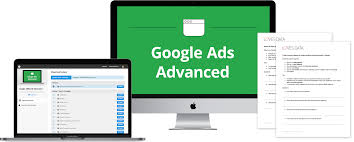 Digital Marketing
Digital Marketing
7 Game-Changing Strategies for Advanced Google Ads Campaign Structuring
- June 5, 2025
- by hardiksharma
Running Google Ads is easy. Running profitable Google Ads? That’s a different story. If you’re already managing ads and wondering why your ROI isn’t scaling, it’s likely not your targeting or your creative—it’s your campaign structure. Most marketers don’t realize that how you organize your account can significantly impact Quality Score, budget efficiency, and overall campaign performance.
In this guide, we’ll explore seven powerful, often overlooked strategies for Advanced Google Ads Campaign Structuring that are helping top-tier digital marketers consistently outperform their competition in 2025. Whether you’re running ads for e-commerce, SaaS, or lead generation, applying these principles can help you tighten spend, improve relevance, and drive real conversions.
Understanding the Foundation of Google Ads Account Architecture
Before diving into advanced tactics, it’s important to review the basic elements of a Google Ads account. At the top level, you have your Google Ads account, which contains campaigns. Each campaign contains ad groups, and each ad group contains ads and keywords. Structurally, every layer should serve a purpose. Random ad grouping or dumping all keywords into a single ad group is a rookie mistake—and one that Google penalizes through lower Quality Scores.
But structuring becomes especially critical when you’re dealing with larger accounts, multiple funnel stages, or audience segments that require nuanced messaging. That’s when basic methods stop working and you need an advanced framework.
1. Mirror Your Funnel in Campaign Structure
One of the most effective tactics for Advanced Google Ads Campaign Structuring is to replicate your marketing funnel within the account. Create distinct campaigns for top-of-funnel (TOFU), middle-of-funnel (MOFU), and bottom-of-funnel (BOFU) stages. This allows you to control bidding strategies, messaging, and budgets separately for users at different stages of their journey.
For example, TOFU campaigns might use broad match keywords and focus on generating awareness through educational content. Meanwhile, BOFU campaigns should be tightly focused on branded or high-intent commercial terms, using exact match and strong calls-to-action. This structure not only improves performance but also simplifies attribution and reporting across the funnel.
2. Use Single Theme Ad Groups (STAGs)
A STAG (Single Theme Ad Group) structure simplifies keyword targeting and ensures every ad in the group directly matches the searcher’s intent. By isolating one product or service per ad group, you increase the relevance between the keyword, ad copy, and landing page. This boosts click-through rates and Quality Scores, ultimately reducing CPC.
In 2025, this approach is still relevant even with Google’s push toward automation. It works especially well when combined with responsive search ads, as you feed the system only highly relevant variations tied to a tightly themed set of keywords.
3. Deploy Granular Location-Based Campaigns
For local businesses or multi-region advertisers, splitting campaigns by geography is no longer just a good idea—it’s essential. Google’s automation performs better when you provide clearly defined boundaries. Instead of one large campaign targeting multiple states or regions, break them into separate campaigns. This gives you precise control over bids, budgets, and ad customizations tailored to each market.
This method also provides better reporting clarity. You can easily analyze which regions are most profitable and reallocate budgets accordingly. Additionally, you can craft ad copy that speaks to specific city names or regional concerns, which significantly improves local click-through rates.
4. Intent-Based Campaign Grouping
Rather than organizing campaigns by product or service, many advanced marketers are now grouping campaigns by user intent. For example, instead of “Running Shoes” and “Casual Shoes” campaigns, you might have “High Intent Purchase,” “Comparison Search,” and “Educational Search” campaigns.
This method allows you to tailor bidding strategies to search intent. High intent campaigns can use Target CPA or Max Conversions bidding, while educational campaigns might be better served with Max Clicks to gather top-of-funnel data. Intent-based structuring also aligns with Google’s push toward audience and signal-based optimization rather than just keyword matching.
5. Segment by Match Type for Budget Control
Even in 2025, using different match types (broad, phrase, exact) in the same campaign can lead to cannibalization. A better approach is to segment campaigns by match type. Use broad match in one campaign to capture discovery traffic, while phrase and exact match campaigns serve more targeted, high-intent queries.
The key benefit here is budget control. You can allocate more funds to exact match campaigns that consistently drive conversions, while capping exploratory spend in broad match. This gives you a testing ground without compromising core performance metrics. Make sure to use negative keywords across match type campaigns to avoid overlap.
6. Responsive Ad Testing with AI Ad Variations
With the rollout of Performance Max and enhanced responsive search ads, Google is giving advertisers less control over how ads are displayed—but more power to test variations. Use this to your advantage. Create ad groups with AI-generated copy variants and monitor performance across multiple headlines and descriptions.
Still, structure matters. Ads should be grouped by closely aligned keyword themes to ensure the AI isn’t mixing unrelated ideas. A strong structure feeds better data into the machine learning model, resulting in smarter optimization. Remember: garbage in, garbage out.
Use A/B testing frameworks to regularly swap in new copy and monitor metrics like CTR, conversion rate, and ROAS. While Google automates delivery, you remain in control of what data it uses to learn.
7. Leverage Scripts and Rules for Automation at Scale
Managing multiple advanced campaigns manually is a nightmare. That’s where automation scripts and rules come into play. Google Ads scripts allow you to automatically pause underperforming ads, adjust bids based on weather or events, and even alert you to anomalies in spend or clicks.
You don’t need to be a coder to use these—many advanced digital marketers use ready-made script libraries available from trusted sources like Optmyzr or Brainlabs. Combine these with custom rules (e.g., pause ads if CPA exceeds ₹800 for 3 days) to ensure your account stays optimized even when you’re not actively monitoring.
Common Pitfalls to Avoid in Advanced Google Ads Campaign Structuring
Even advanced marketers make mistakes. One of the most frequent is over-segmentation. Creating too many campaigns or ad groups can lead to data dilution and limit Google’s ability to optimize effectively. Another common issue is mixing match types or intents in the same ad group, leading to vague signals and underperformance.
Also, avoid the temptation to let Google’s automation do all the work. While Smart Bidding and AI features are powerful, they still require clean structure and human oversight. Treat automation as your assistant, not your strategist.
Integrating Google Ads with Broader Digital Marketing Efforts
A well-structured Google Ads account doesn’t operate in a silo. It should tie seamlessly into your broader digital marketing strategy. Align campaigns with your content calendar, email automation sequences, and retargeting flows. Use UTM parameters for consistent tracking across platforms, and feed campaign data back into your CRM for more informed lifecycle marketing.
If you’re working through an Advanced Digital Marketing Course, it’s crucial to not just understand the theory but also practice campaign structuring inside Google Ads Manager using real data. Simulated accounts are great, but the true insights come from live campaigns and performance feedback.
Final Thoughts
Structuring your Google Ads campaigns properly isn’t just a tactical advantage—it’s a strategic one. As competition heats up and CPCs continue to rise, the only way to maintain strong returns is by giving Google the cleanest, clearest structure possible.
A well-organized account improves Quality Score, supports automation, enables better reporting, and ultimately drives more profitable conversions. Implement the principles above, keep testing, and remember that structure is a living system—it should evolve with your business, market, and performance data.
For further reading and frameworks, explore resources from Google Skillshop, the “Paid Search Association,” and thought leaders like Brad Geddes and Frederick Vallaeys.
By mastering these principles, you’ll turn your campaigns from average to exceptional—and set yourself apart in the increasingly competitive landscape of PPC advertising.


